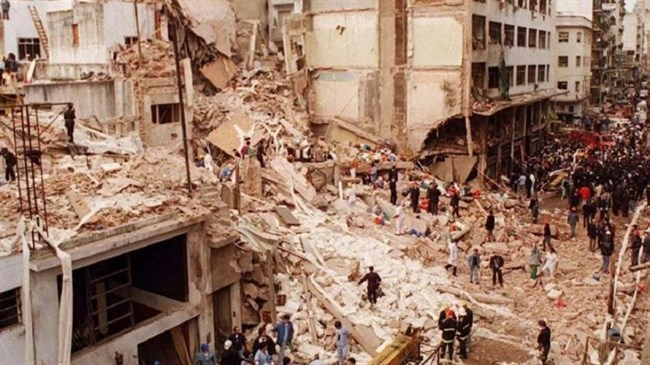How a police spy’s stunning testimony threatens the official US-Israeli AMIA bombing narrative

By Gareth Porter*
The July 18, 1994 bombing of the Argentine Israeli Mutual Association (AMIA) Jewish community center in Buenos Aires, Argentina was one of the worst pre-9/11 terrorist attacks in the Western hemisphere, killing 85 and injuring 300.
For over a quarter century, the US and Israel have blamed Iran for the bloodshed, citing it as primary evidence of Tehran’s role as the world’s largest sponsor of terrorism.
This narrative remains part of the propaganda offensive against Iran, and has been exploited by the Donald Trump administration to justify a campaign of economic strangulation aimed at either destabilizing the Islamic Republic or achieving regime change.
Soon after the bombing, the United States and Israel placed heavy pressure on the Argentine government to implicate Iran. At the time, however, officials in the embassy in Buenos Aires were well aware there was no hard evidence to support such a conclusion.
In an August 1994 cable to the State Department, US Ambassador James Cheek boasted of the “steady campaign” the embassy had waged that “kept the Iranians in the dock where they belong.” In a striking comment to this writer in 2007, Cheek conceded, “To my knowledge, there was never any real evidence” of Iranian responsibility.
Bill Brencick, the chief of the political section in the US Embassy from 1994 to 1997, also acknowledged in a 2007 interview that US insinuations of Iranian responsibility were based solely on a “wall of assumptions” that had “no hard evidence to connect those assumptions to the case.”
Brencick recalled that he and other US officials recognized “enough of a Jewish community [in Buenos Aires] and a history of anti-Semitism that local anti-Semites had to be considered as suspects.” But this line of investigation was never pursued in any official capacity, likely because it contradicted the interests of a US national security state that was dead-set on indicting Iran for the bombing.
However, a dramatic development has threatened to upend the official US-Israeli narrative on the AMIA attack. In 2014, the public learned that a former spy who had infiltrated the Jewish community in Buenos Aires on behalf of Argentina’s Federal Police had revealed to two investigative journalists that he had been ordered to turn over blueprints to the AMIA building to his Federal Police case officer.
The spy was convinced the building plans were used by the real culprits behind the bombing. His stunning revelation prompted a series of articles in the Argentine press.
The former infiltrator’s account provided the first clear indication that anti-Semitic veterans of Argentina’s “Dirty War” and their allies in the Argentine police and intelligence service orchestrated the explosion.
But Argentina’s legal system – still heavily influenced by the intelligence agency that influenced the official investigation to blame Iran and a prosecutor whose career had been based on that premise – stubbornly refused to investigate the former police spy’s account.
*Gareth Porter is an independent investigative journalist and winner of the 2012 Gellhorn Prize for journalism.
Source: The Grayzone

